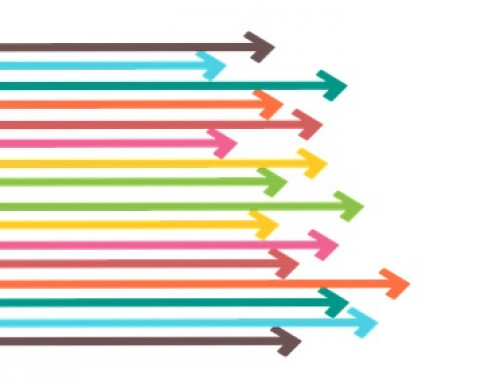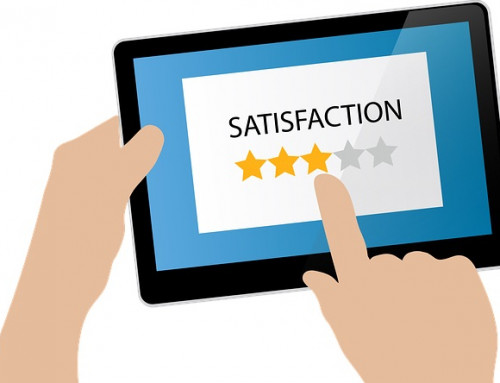
Because Concierge Customer Service is so extensive, it is an investment. That’s why funding this service requires that you offer it only to the customers who generate the most profit for your business. In the wholesale distribution industry, roughly 30% of the customers generate nearly all of the profit in that business; about 20% of the customers generate losses large enough to wipe out 73% of the profits generated by the profitable customers. These numbers illustrate why Concierge Customer Service will likely extend only to the top 10-15% of your customers—the ones who transform revenue to profit at the highest rate. We’ll discuss in-depth the financial foundation of Concierge Customer Service here.
To dissect the Concierge Customer Service model, consider the example of 5-star hotels. These hotels cater to well-heeled clients who will pay a large amount of money for a room and for the amenities that the property offers. In exchange, the hotel offers them an exclusive level of treatment that is funded fully by the high profits that the room and amenity rates generate. Conceptually, this should serve as the model by which your business differentiates or “tiers” its customer service, so that you offer good service to all customers but exceptional service only to the “top tier,” whether you call them “Tier 1,” “Platinum,” or “A-List” customers.
To remind you of why you differentiate your service levels in this way, consider again the benefits of Concierge Customer Service: market penetration, retention, and profits.
Penetration of your market increases as the benefits of your Concierge Customer Service system become apparent to other customers—in particular, your marginal accounts. As those accounts see the advantages your top-tier customers gain and want access to those benefits, your salespeople can show these customers what actions to take to secure the higher-level service. That provides a mechanism to transform money-losing into money-making accounts. To achieve this gain, though, you must ensure that your salespeople understand the system, and the eligibility criteria, thoroughly.
Retention benefits emerge particularly among your most profitable customers, who are the only customers who receive true Concierge Customer Service. You achieve those benefits in three ways:
1. You provide your most profitable customers with a level of service that your competitors can’t, making it impossible for those competitors to steal your most profitable customers away from you. And, as Concierge Customer Service takes root to transform the culture of your company, retention rates among less-profitable customers should also increase. That means you can retain more of the customers whom you want to keep, because you have rescued your customers from what economist Max Weber called the “iron cage” of your competitors’ bureaucracies.
2. As this cultural transformation takes place, you ensure exceptional levels of customer satisfaction and loyalty throughout your organization because you constantly garner customer input through the Feedback Generator. By gathering information most of your competitors lack, you keep your finger firmly on the pulse of customer sentiment, ensuring continuous process improvement.
3. As the frequency and the quality of communication between your operating team and your customers’ operating teams increases, not only will you increase rapport and loyalty but you will also identify opportunities to increase sales to these existing customers.
When you examine the Net Before Compensation (Net Before Compensation, or NBC, shows the profit of a territory or customer after paying for the product and the infrastructure required to deliver the product to the customer. Its value lies in the fact that it eliminates the usual analytical distortions of sales compensation, thereby providing a clear picture of account or territory profitability), you will see something your competitors can’t: The accounts with the highest volume are not necessarily the most profitable. Why? Because their cost-to-serve stands higher than that of many lower-volume accounts. Once you know those high-profit accounts, you can retain them and the profit they generate by providing them with service that far exceeds that of your competitors.
When reviewing the financial foundation of Concierge Customer Service, one of the first things to analyze is the balance between operating cash and cost-to-serve dollars on every invoice, on every account, in every territory. The math is simple: The profitability of your business depends upon whether the operating cash that you generate exceeds the cost-to-serve dollars consumed. When you apply this principle to customer service, you recognize quickly the importance of watching this element carefully.
Otherwise, you risk generating significant account attrition as you start to develop new priorities, processes, and systems. You must retain the operating cash generation from your most profitable accounts. Concierge Customer Service provides the mechanism for doing so because it provides a mechanism for retaining those customers. This is the first benefit that comes from the financial foundation of Concierge Customer Service: the Concierge Customer Service system helps you manage the profits that come from your most profitable accounts, meaning you maintain profitability on your top accounts.
For example, one of our clients found that, when they began offering Concierge Customer Service to 30 of their most profitable customers, they not only increased the retention rate in their top accounts but also created additional sales in all of those accounts, as the customer service representatives deepened the connection with and knowledge of those top accounts. They were also able to decrease the cost to serve of many less-profitable accounts: Because they discovered that many of these smaller customers wanted to order online, the company developed a campaign to ensure that these less-profitable customers understood clearly the benefits of online ordering and the steps to placing those orders.
Once you’ve assessed carefully the balance between operating cash and cost-to-serve dollars, the second element is to prepare for the eventual loss of operating cash from accounts that are actually losing money—that is, accounts in which the cost-to-serve dollars exceed the operating cash they create. The answer isn’t to just “fire” these accounts immediately. Doing so would prove imprudent because you would have to either rationalize your infrastructure and personnel to compensate for the loss in operating cash, or garner additional operating cash to replace the operating cash lost from the “drain” accounts.
That’s why your second step is: make the necessary preparations to potentially lose those accounts, but without hurting your bottom line. That entails creating additional operating cash. How? By attracting more customers who will be highly profitable.
To do that, you must identify companies that can generate high levels of profit and then convert them. You identify these potentially-profitable prospects by creating a list of companies who resemble closely your top accounts— often those who compete directly with them—and then giving that list to your salespeople. Your salespeople can convert them by offering them a service advantage— Concierge Customer Service.
You can afford to do so because, as long as your logistics costs remain far below the operating cash you generate, you can afford to earn lower profit margins to woo those accounts away from your competitors. Concierge Customer Service, then, quickly becomes a wonderful conversion tool for attracting new high-end customers. The more visible your Concierge Customer Service engine becomes, the more powerfully it draws those highly-profitable customers away from your competitors.
Another factor that helps you achieve these conversion benefits is mastering and managing cost-to-serve and pricing. Here’s a secret that many of your competitors don’t know: Our research shows that most companies can offer an 8-10% price (or margin) reduction to your best accounts without losing money. In other words, your most profitable accounts will likely remain profitable if you reduce the margin by 8-10 points without impacting your bottom line, as long as you give up some of your money-losing accounts. Although we aren’t suggesting that you immediately approach your best customers and reduce prices, you can find customers that resemble closely your most profitable accounts or companies that generate 10-15% bottom line, net, on what they’re bringing to you. If you reduce your margin by 1-2 points to bring in accounts that resemble closely these highly-profitable companies, you can have them give you 10%, rather than 15%, NBC (Net Before Compensation). In this way, you use the superior customer service strategies and pricing to go after your competitors’ best accounts without affecting your bottom line, thus increasing the conversion of companies who resemble closely your most profitable accounts.
Here are some key action items regarding the financial foundation of Concierge Customer Service:
1. Do you have profit analytics in place so you understand which customers generate profit and on which customers you actually lose money?
2. If you do, review those data carefully to ensure you know who your most profitable customers are.
3. Ensure that your profit analytics let you see the balance between operating cash and cost-to-serve dollars on every invoice, in every account, in every territory.
4. Make necessary preparations to eventually lose accounts who are hurting your bottom line.
5. Look carefully at your salespeople, to see how diverse their roles are. If you see that they currently must generate prospects, qualify leads, set appointments, make presentations, do follow-up calls, provide customer service, and even bear responsibility for collecting accounts, consider how you can use specialization and division of labor to increase the efficiency of your salesforce.
 Want to learn more? This blog post is based off material from my book with Randy MacLean:
Want to learn more? This blog post is based off material from my book with Randy MacLean:
“YOU CAN’T SERVE THEM WELL IF YOU DON’T KNOW THEM WELL: Capturing and Captivating Customers with Concierge Customer Service™”
You can get the first two chapters for FREE here.
If you’d like a full copy of the entire book, you can get it here.
 Randy MacLean is the founder of WayPoint Analytics, and the creator of the WayPoint system. His company provides analytical and advisory services to companies that have become profit-leaders in distribution.
Randy MacLean is the founder of WayPoint Analytics, and the creator of the WayPoint system. His company provides analytical and advisory services to companies that have become profit-leaders in distribution.
The WayPoint system calculates detailed costs for every aspect of distribution industry clients, so they have precise knowledge of activities that make or lose money and why. With these insights, the companies identify and focus on the markets, customers, products and processes best for the bottom line.
An expert on profit-driving best practices and with a broad range of analytics-driven solutions to difficult profit challenges, Randy speaks, writes and advises executive teams across North America. His clients routinely outperform their peers and their markets.
 Dr. Jeanne Hurlbert, President of Hurlbert Consulting is an expert in sociology and survey research. After spending more than 25 years in academia, she now uses her extensive behavioral science expertise to help companies like yours distinguish yourselves through customer service. What sets her approach to customer service apart is that she begins by helping companies meld research and marketing to find out:
Dr. Jeanne Hurlbert, President of Hurlbert Consulting is an expert in sociology and survey research. After spending more than 25 years in academia, she now uses her extensive behavioral science expertise to help companies like yours distinguish yourselves through customer service. What sets her approach to customer service apart is that she begins by helping companies meld research and marketing to find out:
(a) exactly what their customers want and
(b) exactly how well they’re succeeding in giving customers what they want.
You can schedule a consult with her by going to www.ConciergeCustomerService.com; you can call her at 888-590-9677; or send an email here. And, if you’d like to complete her complimentary assessment to see how well you’re doing in knowing and serving your customers well, just go to www.FixYourService.com.





